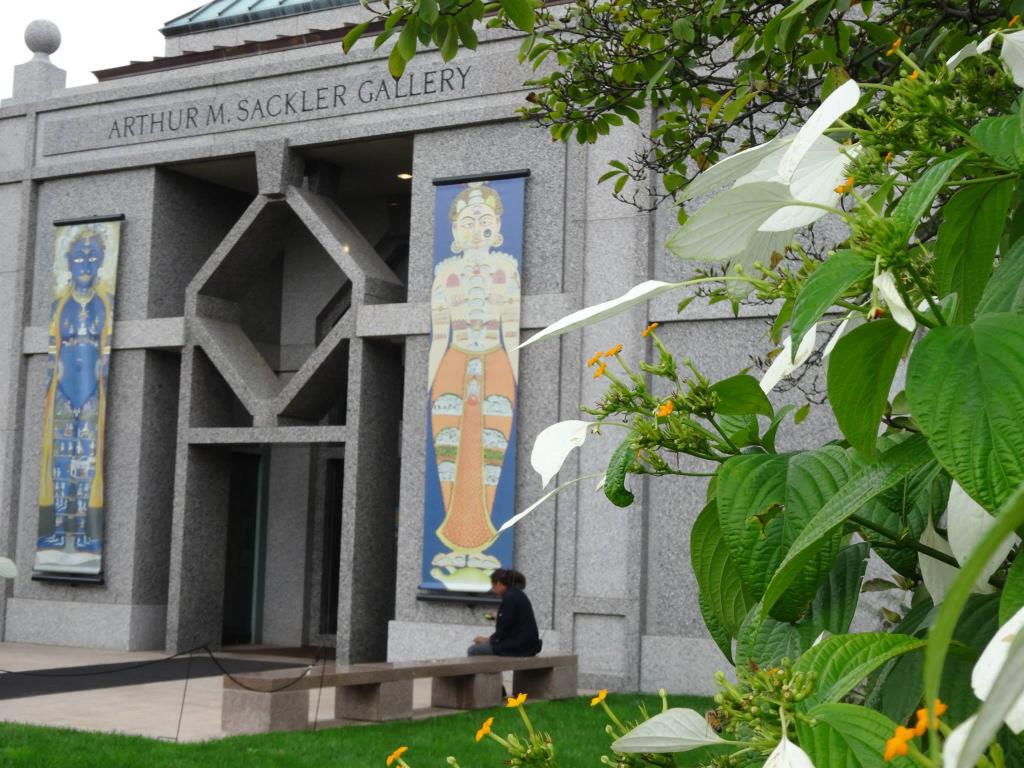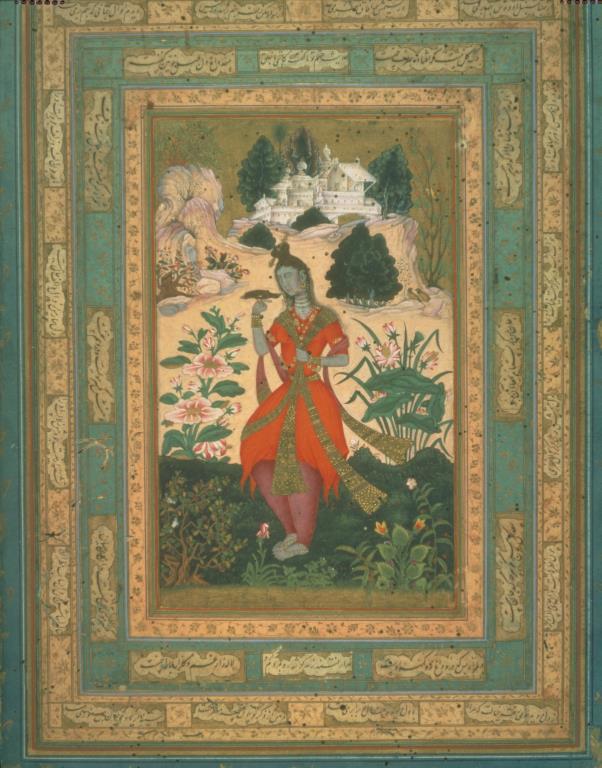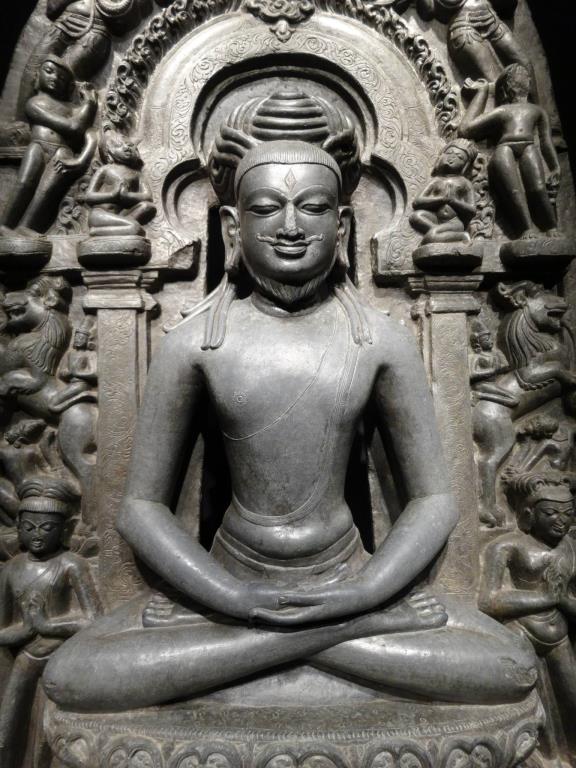November 9, 2013
By Geeta Goindi

‘Yoga: The Art of Transformation’, a ground-breaking exhibition on the visual culture of this phenomenon rooted in India, is on view at the Smithsonian’s Sackler Gallery through January 26, 2014
November 9, 2013
By Geeta Goindi

‘Yoga: The Art of Transformation’, a ground-breaking exhibition on the visual culture of this phenomenon rooted in India, is on view at the Smithsonian’s Sackler Gallery through January 26, 2014
Washington, DC – “Yoga is the stilling of the fluctuations of the mind” – so reads a quote by Patanjali from the ‘Yoga Sutras’ on display at the new exhibit, ‘Yoga: The Art of Transformation’, in the Smithsonian Institution’s Arthur M. Sackler Gallery. The words themselves are timeless and transcend all centuries, as does the global phenomenon of yoga.
The origins of yoga are deep-rooted in India and the ground-breaking exhibit offers a fascinating journey into the treasured and timeless culture and history of this great nation! Through devotional sculptures, illustrated court manuscripts, colonial photographs and early films, one learns about the ancient practice of yoga and how it transformed over the years; viewed on a deeper level, how it transformed many over the millennia.
Julian Raby, Director of the Sackler and Freer Galleries which together form the Smithsonian’s museums of Asian art, explains that the “exhibition looks at yoga’s ancient roots and how people have been trying to master body and spirit for millennia. By applying new scholarship to both rarely seen artworks and recognized masterpieces, we’re able to shed light on practices that evolved over time – from yoga’s ancient origins to its modern emergence in India, which set the stage for today’s global phenomenon”, he said.
The exhibit at the renowned museum is the first of its kind focusing on the art of yoga. Curator Dr. Debra Diamond notes, “These works of art allow us to trace, often for the first time, yoga’s meanings across the diverse social landscapes of India. United for the first time, they not only invite aesthetic wonder, but also unlock the past – opening a portal onto yoga’s surprisingly down-to-earth aspects over 2,000 years”.
On the eve of its opening here in Washington, a glittering gala, ‘Some Enlightened Evening’ was held drawing luminaries from the worlds of art and yoga. It was the Sackler’s annual benefit event honoring Indian Ambassador Mrs. Nirupama Rao and Maharaja Gaj Singh II of Jodhpur-Marwa. On hand, were acclaimed American actor Alec Baldwin, his wife Hilaria, a yoga instructor, and singer Chandrika Tandon.
The exhibit on yoga is interactive as are major ones at the Smithsonian, and it is a tribute to the magnificent art, history, culture and traditions of India! On Saturday, October 26, Diwali – the Festival of Lights, was celebrated at the Freer and Sackler Galleries, in conjunction with the exhibit on display. A traditional lamp-lighting ceremony was led by Ambassador Rao, followed by a full day of public activities which included spotlight tours, games from across Asia, intricate ‘Rangoli’ drawings, and yoga-inspired art in hands-on workshops. Indian classical musician K. Sridhar demonstrated musical meditation, storyteller Louise Omoto Kessel shared tales of Indian deities, and free yoga classes were offered throughout the day.

Vishnu Vishvarupa in the exhibit, ‘Yoga: The Art of Transformation’. Jaipur, Rajasthan, ca. 1800-1820. Victoria and Albert Museum, London; given by Mrs. Gerald Clark. Photo courtesy: Smithsonian Institution
‘Yoga: The Art of Transformation’ will be on view at the Sackler Gallery until January 26, 2014, and then travel to the Asian Art Museum in San Francisco and the Cleveland Museum of Art. Here, in Washington, some 133 exquisite objects are on display from 25 museums and private collections in India, Europe and the United Sates.
It is noteworthy that the exhibit begins and ends with teachers. From the outset, teaching is at the core of yoga – the noble endeavor to disseminate knowledge! At the entrance, one finds extraordinary sculptures of Yogis and Yoginis who have perfected the practice of yoga and transcended to the divine realm. In ancient India, these sculptures were placed in temples and revered.
At a Press Preview, October 22, Diamond described the Tantric Yogini Goddesses as “the female embodiment of yogic power”. These were “powerful, fierce Goddesses who offered supernatural powers and protection”, she said.

Yogini with Mynah in the exhibit, ‘Yoga: The Art of Transformation’. Bijapur, Karnataka, ca. 1603-04. The Trustees of the Chester Beatty Library, Dublin. Photo courtesy: Smithsonian Institution
At the end of the exhibit, there is a whole section devoted to Swami Vivekananda who wrote the ‘Raja Yoga’, a revolutionary work, a masterpiece! The images are of his trip to the US where he made a huge impact. Here, one also finds an engrossing film on yoga asanas (postures) featuring T. Krishnamacharya and his student B.K.S. Iyengar. It’s an eye-opener for some, a reminder for others, about the incredible practice and postures of yoga. About the film, Diamond told journalists, “it’s a sublime way to end the exhibition”!
Today, there is global recognition that Yoga has quantifiable health benefits and asanas are considered the most important element of yoga, a marked departure from ancient times and a testimony to ‘the art of transformation’. Yoga has become an ecumenical, spiritual science, open to everyone!
In an earlier section on the path of yoga, followers are encouraged to practice meditation in order to transcend suffering. Here one sees austerities and the physiology of the yoga body. In ancient Indian tradition, the body is seen as the cosmos. “Whether a Brahmin, an ascetic, a Buddhist, a Jain, a skull-bearer or a materialist, the wise one who is endowed with faith and constantly devoted to the practice of yoga will attain complete success”, reads a quote from the Dattatreyayogasastra.
A later section shows hatha yoga entering the western world. Europeans represented the image of Yogis as criminals, decadent and superstitious while in the American tradition, they were equated with magicians.
Regarding the paintings in the exhibition, they are exquisite to the point of perfection! The works titled ‘Rama in the Forest of the Sages’, the transmission of teachings with ‘Shiva as Lord of the Yogis’, ‘Maharana Sangram Singh II of Mewar visiting Savina Khera Math’, to name a few, are marvels of art! The subjects are represented with such richness of detail and color; a viewer can actually enter into the spirit of the painting.

Sculpture of a historical teacher sitting in meditation at the beginning of the exhibit, ‘Yoga: The Art of Transformation’ currently on view at the Smithsonian’s Sackler Gallery
Diamond believes the exhibit plays a critical role as “it focuses on India’s wonderfully abundant archive” offering invaluable insights. “We’re excited about ‘Yoga: The Art of Transformation’ because it brings together amazing works and new scholarship”, she said. “Yoga is a household word the world over, but scholars have not holistically explored its visual culture before; visual culture provides new insights. So, we think the exhibition will delight and inform broad audiences”.
Regarding the impact of the exhibit, she believes it will create “a greater appreciation and knowledge of Indian art and culture – and for those who are interested in yoga, a greater sense of its depths and diversity”. Already four courses in the visual culture of yoga are being offered in universities across the US at both the undergraduate and graduate levels, Diamond disclosed. “It’s a new field and we happily anticipate many new discoveries about yoga’s rich meanings and histories”, she said.
Community Special by MYDOSTI.COM















































































































